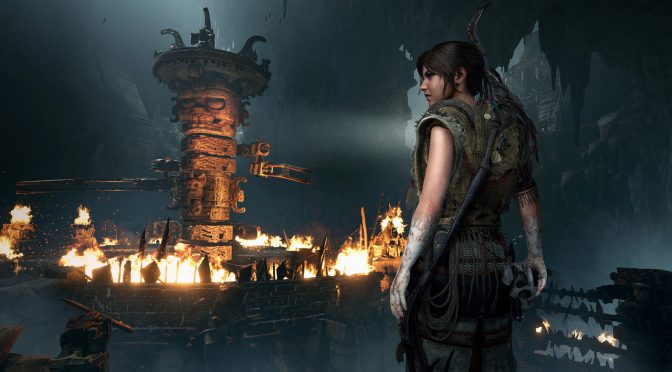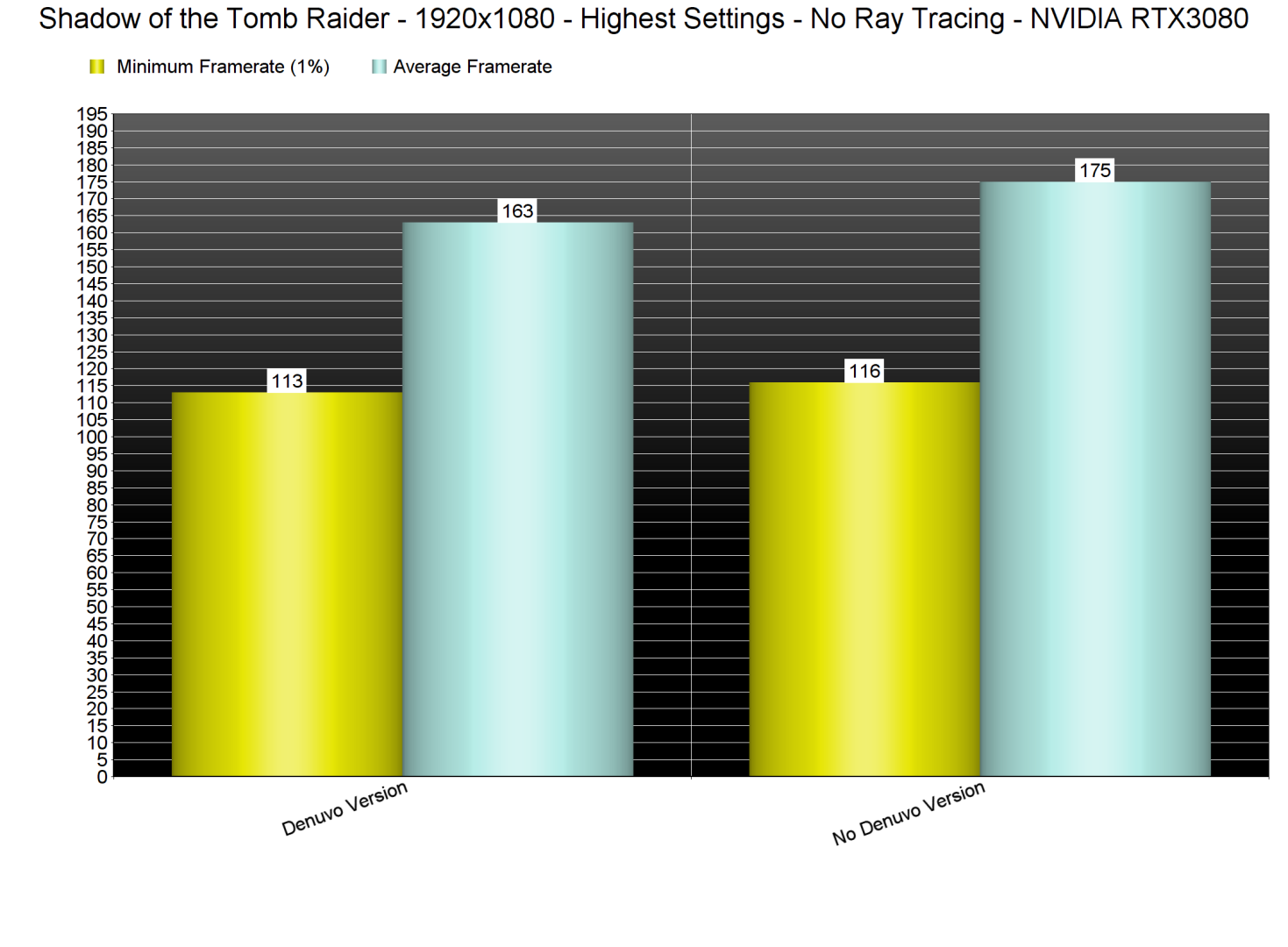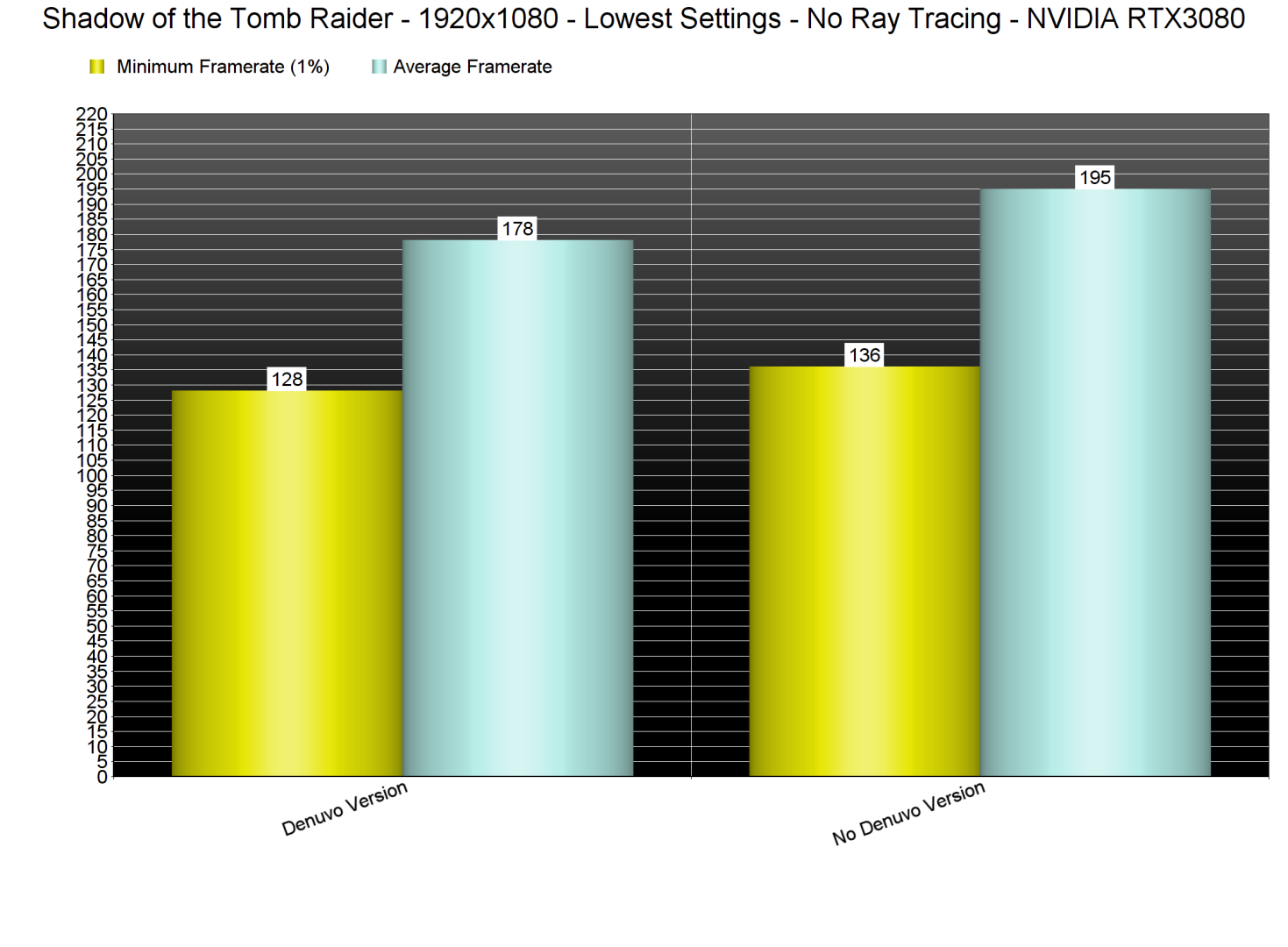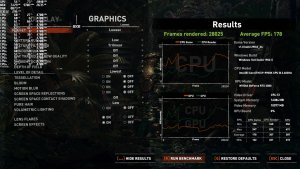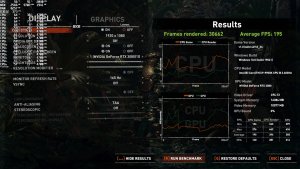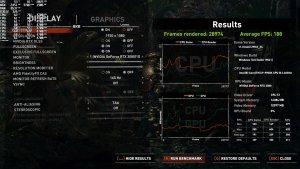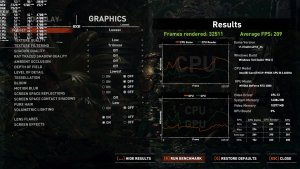A few days ago, Square Enix and Crystal Dynamics removed the Denuvo anti-tamper tech from Shadow of the Tomb Raider. As such, and after some reports, we’ve decided to benchmark the game and see how it performs now that Denuvo is no longer available. And, surprisingly enough, the game now runs noticeably faster.
For these benchmarks, we used an Intel i9 9900K with 16GB of DDR4 at 3600Mhz and NVIDIA’s RTX 3080. We also used Windows 10 64-bit, the GeForce 496.13 driver.
Now while Square Enix rolled back this latest update for the game, you can still access it via the Steam beta builds. For what it’s worth, this latest version ran without issues on our PC system.
As we all know, Denuvo may introduce some additional CPU overhead. As such, we’ve decided to benchmark scenes with settings that would introduce a possible CPU bottleneck. Therefore, we benchmarked the game at 1080p/Highest Settings (without Ray Tracing or DLSS) and 1080p/Lowest Settings.
Square Enix and Crystal Dynamics claimed that this latest update upgrades NVIDIA DLSS to the latest version, brings an improved shadow denoiser for use with ray traced shadows, updates to multiplayer infrastructure to use Epic Online Services and fixes specific compatibility issues with Intel GPU hardware. This is why we did not use DLSS or Ray Tracing. Apart from these improvements, this patch does not pack any CPU or memory improvements/optimizations (at least according to the developers themselves).
At 1080p/Highest Settings, we saw a small performance improvement in the built-in benchmark. The first and third/last benchmark levels/areas performed slightly better. On the other hand, the performance in the more GPU-bound second benchmark level/area remained the same.
Things got really interesting though when we lowered our settings to the Lowest. By doing this, we saw an 8fps improvement in our minimum framerates, and a 17fps improvement in average framerates. This is a noticeable performance boost. Not only that, but owners of older CPUs may see even higher performance increases.
When we disabled Hyper-Threading, the performance difference between the Denuvo and Denuvo-free versions got even bigger. The Denuvo version ran 30fps slower than the Denuvo-free version.
What this ultimately means is that Denuvo did affect performance in this particular game. Again, Crystal Dynamics did not mention any CPU/memory optimizations. Thus, this performance boost is most likely due to the removal of Denuvo. These performance improvements are also more noticeable on older CPUs. So, Shadow of the Tomb Raider is a game that players can use as an example of a game running worse with the Denuvo anti-tamper tech!

John is the founder and Editor in Chief at DSOGaming. He is a PC gaming fan and highly supports the modding and indie communities. Before creating DSOGaming, John worked on numerous gaming websites. While he is a die-hard PC gamer, his gaming roots can be found on consoles. John loved – and still does – the 16-bit consoles, and considers SNES to be one of the best consoles. Still, the PC platform won him over consoles. That was mainly due to 3DFX and its iconic dedicated 3D accelerator graphics card, Voodoo 2. John has also written a higher degree thesis on the “The Evolution of PC graphics cards.”
Contact: Email

